Learn how to make a fidget cube out of cardboard in under 20 minutes! This fun DIY fidget project is part of our DIY fidget toys for ADHD series!
I hate seeing how much trash I throw away on a day-to-day basis. Even though we recycle as much as we can, I still have more cardboard boxes and things that stack up than I would like.
I’m always looking for ways to use these materials for something else. And cardboard makes a wonderful base for all sorts of fun crafts.

Learn how to make a fidget cube from cardboard of your own by following our directions
Learn How to Make a DIY Fidget Cube with Cardboard!
There are a lot of ways to use cardboard, and I’ve always been a bit tinkery with pieces from the recycling box my whole life.
My 9 year old daughter sat down and made this cardboard fidget cube together and it was a lot of fun!
Supplies to Make a Homemade Fidget Cube Out of Cardboard
If you are going to make your own DIY fidget cube from cardboard, you’ll need a few things.
I just used things that I had lying around the house, but here is what I used to make mine:
- Cardboard
- Plastic straws
- Glue gun and glue sticks
- Small wooden dowels
- Finger ring fidget
- Plastic bottles
- Pom poms
- Pony beads
- Scissors
Don’t have time to make your own fidget cube? Here are some of our favorite fidget cubes that are a little more portable!
- Thera Cube for ADHD and Autism
- Infinite Fidget Cube
- Glitter Cube Brain Teasers
- School Friendly Fidget Cube
How to Make a Fidget Cube Out of Cardboard
One of the most fun things about this project is that your fidget cube will be completely unique!
It won’t look exactly like ours, but that is OK! Using your imagination to come up with fun activities for your cardboard fidget cube is half the fun.

Scroll to the end of the post to find the directions for making your own cardboard fidget cube, but first, read a little bit about how we use fidget cubes in our house!
How to Use a Fidget Cube
A fidget cube has a lot of uses for girls with ADHD.
Here is how each of the members of my family use fidget cubes:
I have an anxious habit of picking at my fingernails and skin. I do this almost constantly and nearly unconsciously. A fidget cube gives my hands something to do without destroying my skin.
My 16 year old daughter tends to drift off into a daydream state while in school. A fidget cube helps her stay grounded and focused on the lesson because the action of the activities on the cube keep her in the moment and prevent her from losing focus.
My 9 year old daughter has an oral fixation. She puts almost anything in her mouth- whether it is good for her or not! So she uses fidget cubes to keep her from putting things in her mouth that really shouldn’t be in her mouth, like pencils and communal school supplies (yikes!).
My youngest daughter is 3. She uses fidget cubes to strengthen her fine motor skills and strengthen her hands for better penmanship later on in life.
That’s how we use fidget cubes, but there are also many other ways to use them. How do you use fidget cubes in your life?
More DIY Fidgets You Might Like
If you love making your own fidgets (my 9 year old is obsessed with making her own and made many of the fidgets on ADHDSupergirls herself!), then you’ll love these other homemade fidgets to make.
- 20+ Easy DIY Fidget Toys to Make
- 20+ Easy DIY Fidget Toys for ADHD that Girls Can Make
- 13 Easy DIY Fidget Cubes for Girls to Make at Home
- Fidgets You Can Make Yourself
And now, here are the directions to make your own DIY fidget cube out of cardboard!
Directions to Make Your Own DIY Cardboard Fidget Cube
Making a fidget cube from cardboard is surprisingly easy! I thought it was going to be difficult, but even my 9 year old could help and she made most of the sides for our cube.
First, choose a size for your cube. The larger it is the more fidget space you’ll have, but if you make it too large, it will be bulky and hard to carry around.
I suggest making your cube squares between 1 and 2 inches on each side. Our cube has one-inch sides.
Use a ruler to mark out your squares and cut them out with scissors.
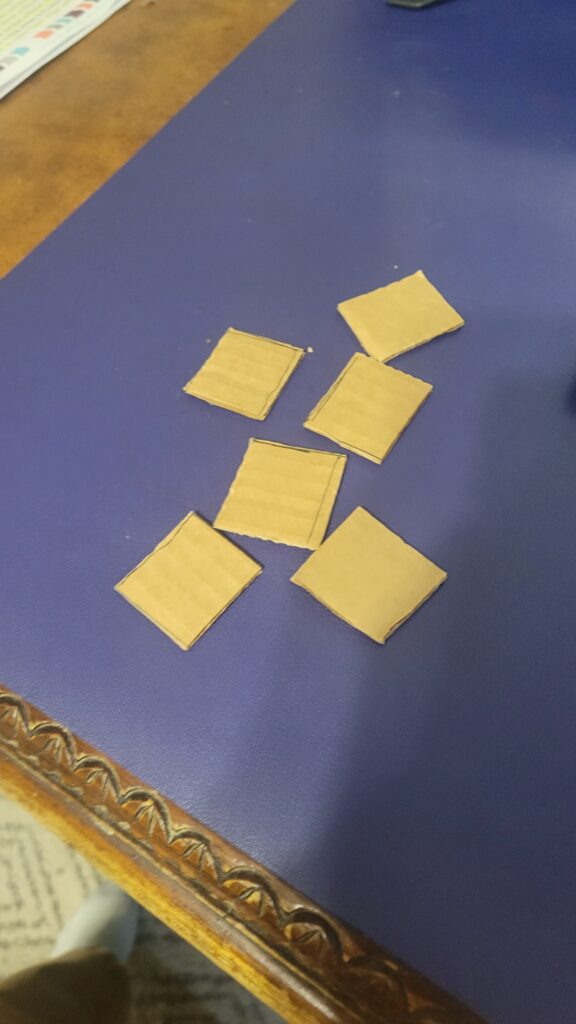
Next, make your fidget sides. What you make will ultimately be up to you and the kind of sensory input that you like, but I’ll describe what we did to make ours.
For the fidget below, we cut the stretchy part out of bendy straws. I glued the ends down to the side of the cube. You can move your fingers around and the straws will make a fun sound and feel a bit bumpy.
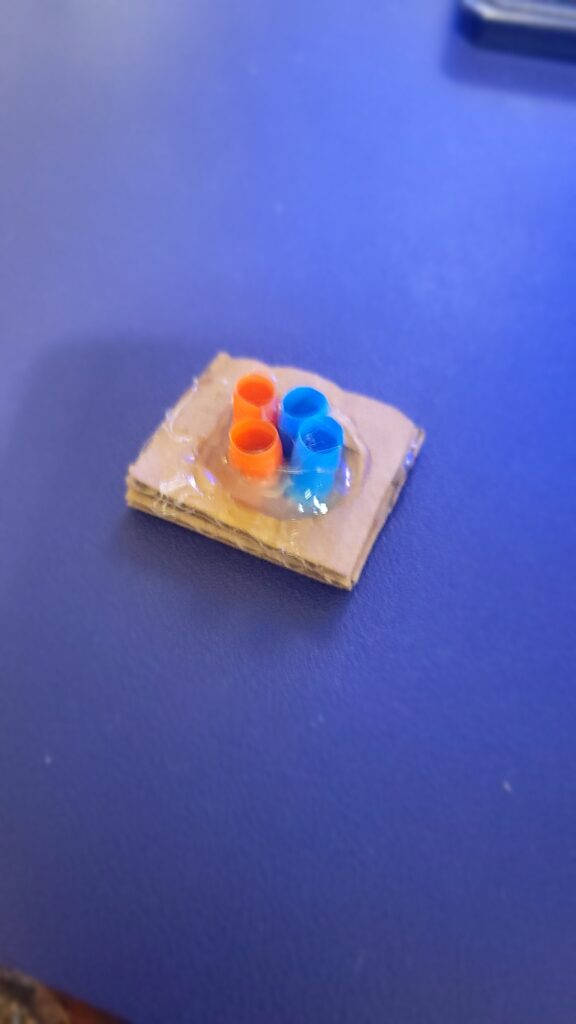
For this rolly ball side, we cut open a square in the center of the cardboard square.
Next, I cut two pieces of wooden dowel to one-inch long. I threaded four pony beads onto the wooden sticks and hot glued them into the hole in the cardboard.

This side of the cardboard fidget cube was made from a broken finger fidget. I glued the ends down to the cardboard to make a spring action.
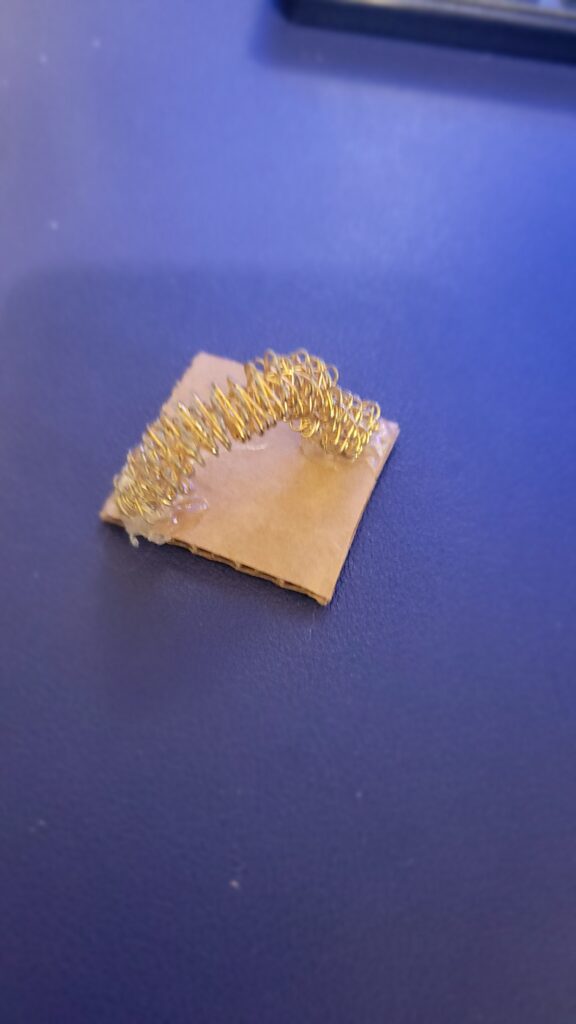
We made this side of our cube by cutting a hole in the side of our cardboard piece and pushing half a large pom pom through it. I glued the edges of the pom pom to the back of the square so it wouldn’t fall out.

This side of the cube I just made by gluing our cardboard fidget spinner that I had already made onto it. Learn how to make a fidget spinner out of cardboard here.

This side of the cube was the most complicated, but it was still easy to make. I took the lid of a water bottle and poked two holes in the top with scissors.
I also poked two holes in the cardboard piece.
Next, I threaded a rubber band first through the bottle cap and then through the cardboard piece. Tie the two ends of the rubber band together tightly to make a sort of joystick button on your fidget cube.
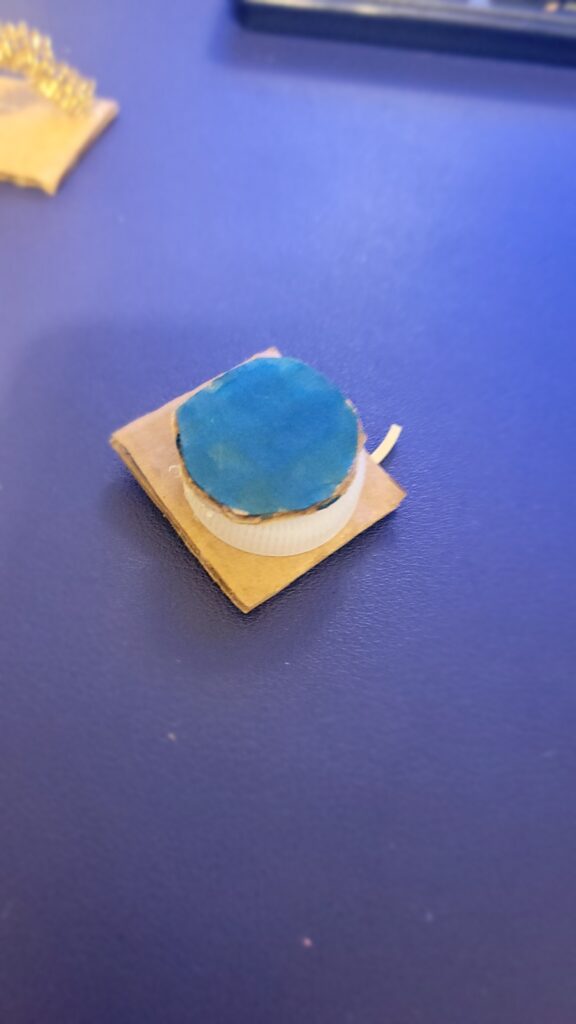
Finally, use a hot glue gun to glue all six sides of the cardboard fidget cube together. If you have any gaps, you can fill them in with additional glue.
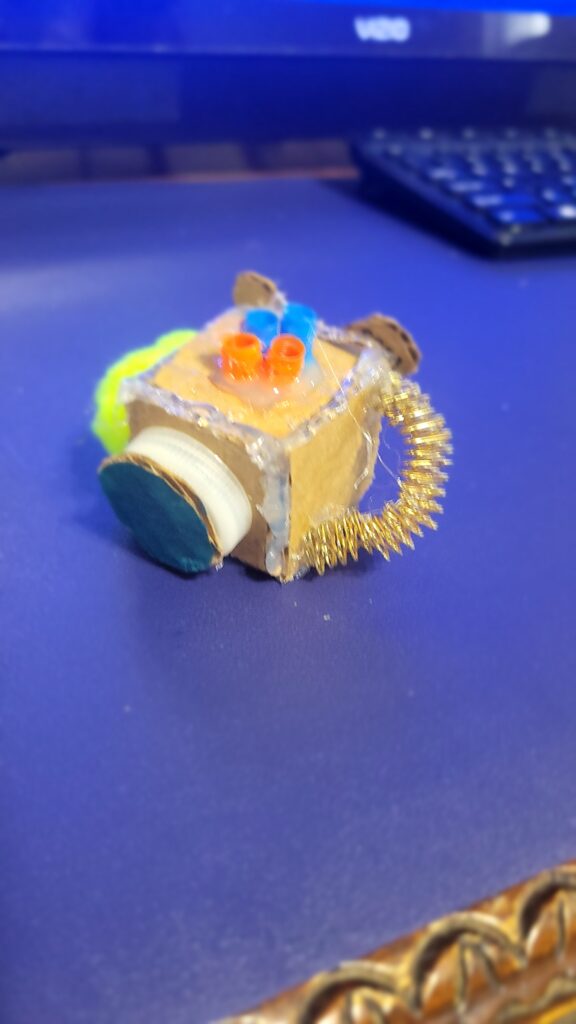
Wait about 5 minutes for the glue to fully dry before playing with the fidget cube.
Watch the cardboard fidget cube in action below!
@adhdsupergirls DIY cardboard fidget cube I made for my daughters with ADHD. #adhdtiktok #adhd #fidget #fidgettiktok ♬ She Share Story (for Vlog) – 山口夕依
